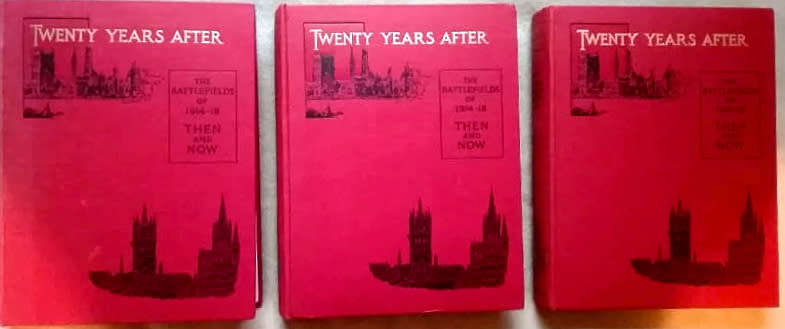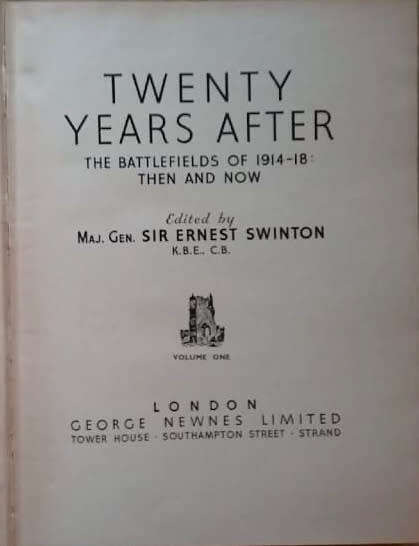



Twenty Years After. The Battlefields of 1914-18: Then and Now - Sir Ernest Swinton ( 3 volume set)
Check my rate
| Main centres: | 1-3 business days |
| Regional areas: | 3-4 business days |
| Remote areas: | 3-5 business days |




| Main centres: | 1-3 business days |
| Regional areas: | 3-4 business days |
| Remote areas: | 3-5 business days |
Edited by Major-General Sir Ernest Swinton, published by George Newnes, 1936-1938, three volumes complete, hardcovers, illustrated, 2230 pages of text and photography, set measures 22 cms x 27.8 cms x 13.5 cms, condition: as new.
Major-General Sir Ernest Swinton, KBE, CB, DSO (1868 1951) was a British Army officer who played a part in the development and adoption of the tank during the First World War. He was also a war correspondent and author of several short stories on military themes. He is credited, along with fellow officer Lieutenant-Colonel Walter Dally Jones, with having initiated the use of the word "tank" as a code-name for the first tracked, armoured fighting vehicles.
Swinton was Chichele Professor of Military History at the University of Oxford and a fellow of All Souls College, Oxford, from 1925 to 1939; he was also Colonel Commandant of the Royal Tank Corps from 1934 to 1938. He edited Twenty Years After: the Battlefields of 191418: Then and Now
"I first saw these books in a military library in the 1970s and was fascinated, as I was then doing a researching tour of the 14-18 battlefields.. It was interesting to compare not only the villages, roads and hills as they looked in 1918 with those of 1938, but also 1938 with 1972. We get two for the price of one--a vivid view of the Great War devastation, and another of the postwar reconstruction and the landscape and townscapes of France and Belgium on the eve of the second war. Swinton was a key Western Front officer, so his text, captions and photos are spot-on. Of course with google street search and the guides published in recent years by such people as Major and Mrs Holt, one can see excellent up-to-date images of many of these sites, but for the real enthusiast there is nothing like this "20 years on" tour of the places millions of people could still recall in 1938, just before another conflict swept across the same region."
"These three volumes are probably the most detailed published history of the real war records, they tell a story that has long been overlooked, and show details of what happened grim but so true, the photography has been well reproduced, and the detail is very good considering the age, published in 1938 just 20 year from the end and 1 year from the re-start."